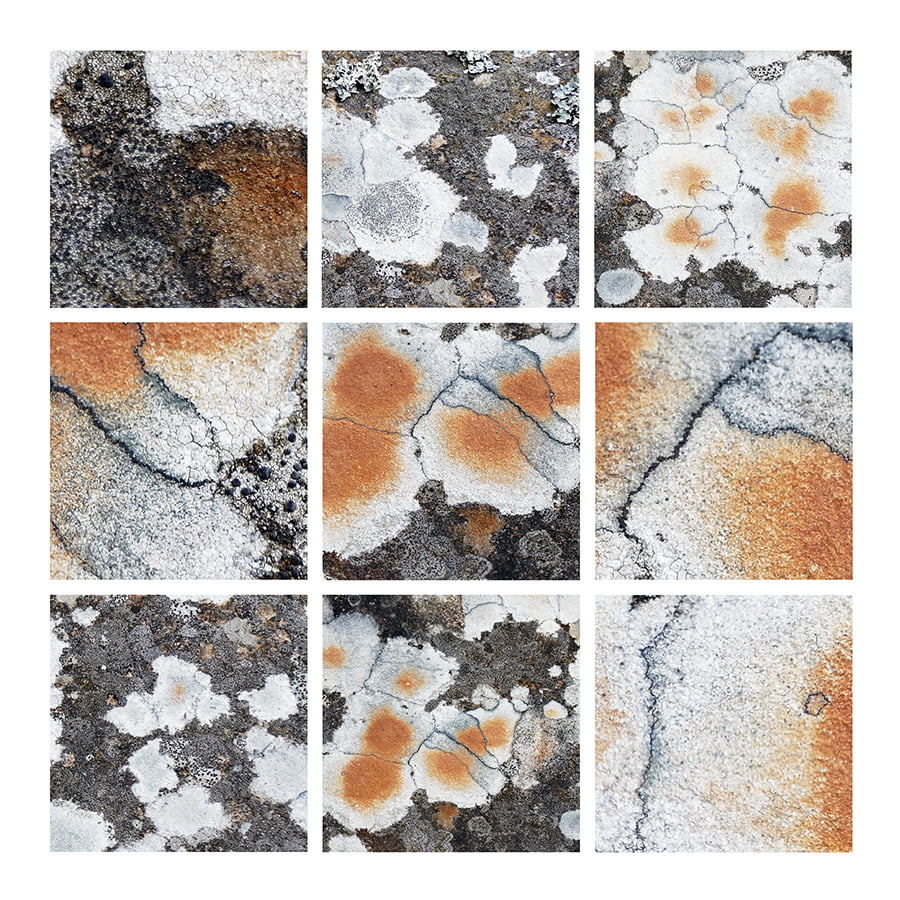Searching for the Ancient Lichens of Moray

I like to walk slowly and observe the tiniest detail. This allows me to see amazing scenery and many unexpected sighting of wildlife along the Moray Coast. I listen to my steps upon the earth and I often get distracted. However, this distraction has got a lot worse since I met a lovely lady from Forres. She introduced me to the wonderful world of lichens and now my walk is more of a dawdle.
In comparison, I understand that my dawdle is nothing to the legendary slow growth rate of some crust-like lichens found on rocks: sometimes as little as 0.1mm per year.[1] Now, when I walk, I am captivated by the colours of the lichen, for example, I’ve seen black, white, grey and green. Yet, the orange lichens capture my imagination the most, as they look like abstract paintings of fried eggs cooking on sun-heated rocks.
On reflection, these overlooked and neglected lichens can teach us a lot about life. Lichens are survivors! They are one of Scotland’s oldest living things as they can live for hundreds of years and, most importantly, they have introduced me to the delightful idea of symbiosis: The mutually beneficial partnership between two organisms. [2]
“Lichens can survive unprotected in the harsh conditions of space, a European Space Agency experiment discovers.”[3]
NewScientist
Can humans be a bit more like lichens?
As I walk and search for the ancient lichens of Moray, I wonder how they can survive in space, thrive in a Scottish winter and live for hundreds of years. This process of Symbiosis seems important to me, could it be the way forward for our own survival in collaboration with the natural world? There are many benefits to building long-lasting and balanced relationships. With the right investment, could we make a positive impact on our world?
[1] Gilbert, O. L. Lichens. Edinburgh, Scotland: Scottish Natural Heritage and British Geological S, 2000. Print
[2] Ibid
[3] “Hardy Lichen Shown to Survive in Space.” New scientist (1971) 10 Nov. 2005. Web. 5 Sept. 2021.
